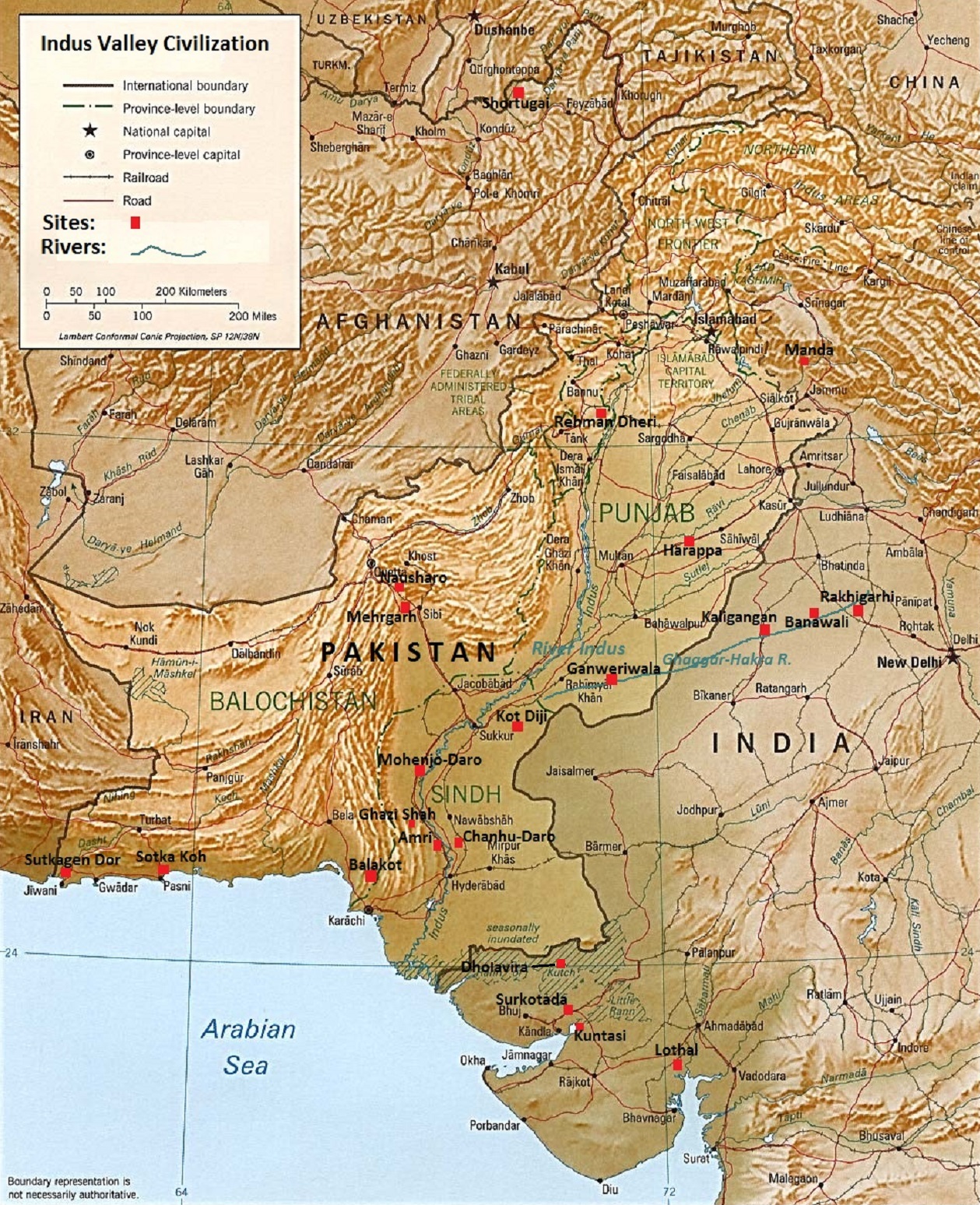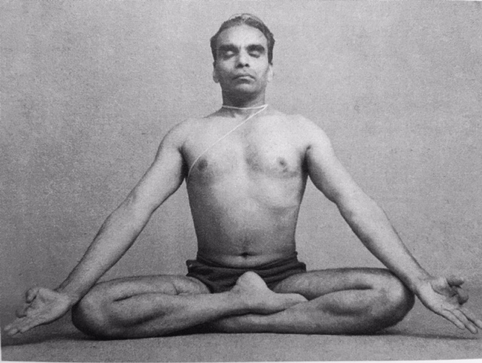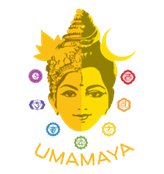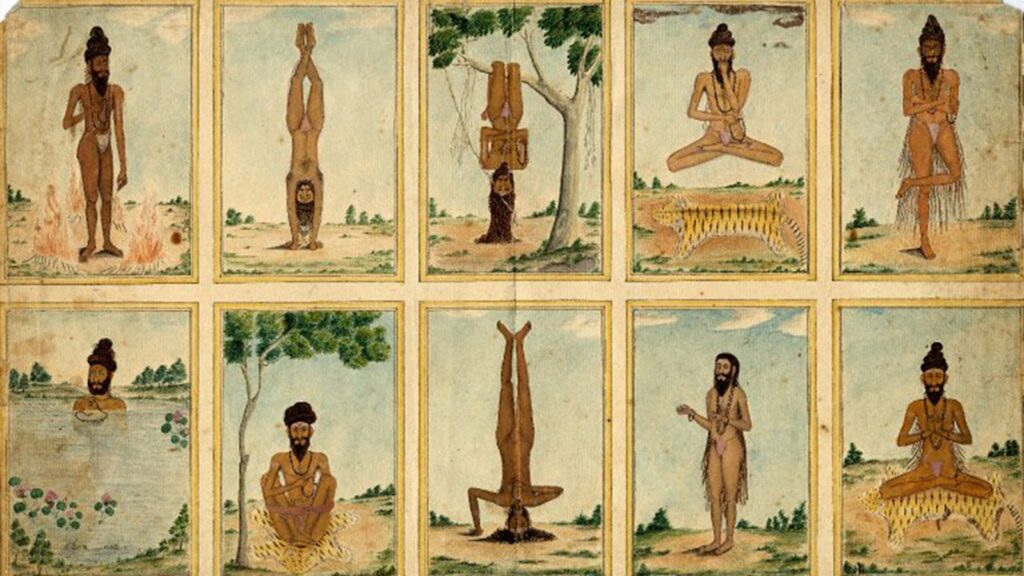Once upon a time, from around the 26th to the 19th centuries BCE, an advanced society flourished along the Indus River, from North-eastern Afghanistan, through Pakistan and into North-western India. It was called the Indus Valley Civilization. On a par with other advanced cultures of the time like Egypt and Mesopotamia, they manufactured textiles, forged metals, had indoor plumbing and produced jewelry and ceramics.

In 1928, an archaeological survey at the Mohenjo Daro site in what is now Pakistan, uncovered a collection of steatite seals that the Indus people used to mark their ceramics. Among these were several seals with depictions of a humanoid figure seated in what modern yoga parlance much later would be referred to as siddhasana, or ‘the accomplished pose’, siddha meaning accomplishment and asana referring to the pose.

Although unclear, the figure appears to have 3 faces and a horned crown. On one of the seals, the figure is surrounded by animals, so at the time of discovery, based on the location at which it was found and the understanding of the culture as we do today, it was associated with the deity known as Shiva, another name for whom is Pashupati -The Lord of Animals. Actually Shiva has thousands of names, but the correlation was made and it stuck.



Inscribed upon the seal were a series of symbols known today only as ‘the Indus Script’ or the Harappan language. Unfortunately as the Bronze-age language has no living continuants, it cannot be deciphered, and apart from hypothesis, we can never really know what the inhabitants were thinking when the seal was produced, but the archaeologists saw a guy sitting cross-legged, the association with yoga was made, and quite suddenly we have the idea that Yoga is 5,000 years old. Some say it’s even older. The only problem with these hypotheses is that there is no further evidence to substantiate them except for these few and very vague seals. There’s nothing else in the culture to suggest that Yoga was a thing yet, and it would be another eon or so before we might find such evidence.
Yoga is Secular
Yoga is a very interesting tradition, not so simple to define and pin down, because it developed in an alignment with human experience rather than academically, or religiously according to a set of doctrines. Sure it finds overlap in other Indo-Asian religions and traditions like Hinduism, Jainism, Buddhism and Sufism – much later we’ll even find overlap with mystical Judaism! But above all, yoga is a ‘practice’ and central to the practice is the connection of the body with the mind. It’s a psycho-physical practice wherein we find the concept of ‘integration’ to be of prime importance. Integration of what? This is the fundamental point. The practice of integration of pure awareness, or ‘self’-awareness – the pure awareness of being alive integrated with one’s utter human-ness, the embodied experience of being.
The sage Patanjali delineated this practice in the 2nd century CE in a set of Aphorisms called the Yoga Sutras. Patanjali was also of the view that this practice was secular by nature and chose the term Isvara to represent the face of a generic Godhead as a model of meditation. By using the term Isvara, as opposed to Shiva or Visnu, Patanjali kept his Yoga nonsectarian even while encouraging devotional practices towards the goal. Suffice it to say, Yoga is more a ‘spiritual’ and self-reflective practice than a religious or outwardly (upwardly) focused one. Still, Yoga doesn’t find its roots in the teachings of Patanjali either.
Yoga Has Myriad Definitions
Neither are these roots found in the Vedas, which is also a widely circulated version of history with little foundation in fact to back it up, and unfortunately it’s a version which is taught widely in many YIT trainings and just as many books. The Vedas were composed and handed down orally, over ten centuries between 1500 BCE and 500 BCE, in a tradition of mnemonic science that saw the sages of the times memorize entire tomes of literature, impeccably, almost flawlessly. The oldest of these texts, the Rig Veda, the oldest text of any Indo-European language, contains no reference to Yoga as we understand it today.
It has to be understood that if you look into the Sanskrit dictionary you’ll find thirty or so different definitions for the word Yoga, one of which means to ‘yolk’ or rein in, and this is precisely how it was used in one rare occasion in the Vedas, too, but again it wouldn’t be until Patanjali’s time in the 2nd century CE that the Bhagavad Gita would present us with the term to metaphorically connote a reining in of the mind. In the Vedas it literally meant to yolk a cow. There is an obscure reference, in the last of the ten volumes of the Rig Veda, to ‘long hairs who ride on the wind and drink poison with Rudra’, and yes, according to what we know today, it might be a reference to the ascetic yogin, but all evidence stops there. One would suppose that if the Vedas are truly the origin of a practice and philosophy as rich and deep as Yoga, then they would quite literally be overflowing with references. This is not the case and it wouldn’t be until the late 6th century BCE that, developments as they were, would finally ignite the fuse that would soon establish Yoga in the public eye and begin to provide an unbroken line of evidence that flowed into the modern era.
A Higher Calling
By the 9th century BCE India was urbanizing and society was developing as societies do. Agriculture flourished and there was economic growth and ample trade. Hierarchies were being established. But with affluence also came poverty and a division of classes. The caste system was introduced and that lead to further challenges. Sanitation was non-existent, leading to disease and shorter life spans. People were actually getting sicker as the society modernized; there was death in the streets. And over the course of a couple of centuries people began to rebel against the status quo leading to something like an ideological uprising which would come to be known as the Sramana movement. Now we see the youth taking to the streets, shouting at the establishment for a return to Nature, a call to get back to our roots and live more in harmony with the natural order. It was the beginnings of a spiritual revolution that saw a new level added to the stratification of the society – the sadhu – the ascetic yogin.
The Yogic tradition worships the Seed of Consciousness, the Light and Seat of Realization, as Siva, or Prakasa – the ‘I Am’ principle. And that Power of Perfect Self-consciousness and reflection on this principle, in the Divine Light of Pure Awareness, is Siva’s Bride, Sakti, the Goddess Nature and Force of His Source. We call Her Vimarsa. And it’s through this power of self-reflection that we know ourselves as emanations of the Original, and come to be able to identify with Love and Beauty in Absolute rather than finite terms of embodiment. One of the fundamental practices of the yogin is immersion (Samavesha) into this Absolute. Using tools like breath regulation, sensory withdrawal, meditation, and inner attunement through chanting mantras, we transcend the mundane story-lines of mind to re-establish an equanimity only found when all labels have found their reconciliation at that center point where all opposites must ultimately meet.
The Sramana Movement
The Sramana movement was ultimately all about getting back to Nature. Sramana means ‘One who strives’ for the truth, and these early strivers, these Sramanas, would soon set about establishing Ashrams (a place where one strives for the truth) where people of similar mindset could gather and do the same. These were some of the earliest communes wherein the ideology that had rejected the social values of their time began to develop a new idea, one that postulated a deeper, truer meaning to human existence. These ancient hippies left off the shackles of social norms, shaved their heads, or conversely let their hair grow really, really long until it matted in dreadlocks, left all their worldly possessions behind them – even their clothes, and went out into the wilderness to discover themselves through a new meditative culture that would soon begin developing into a systematic regimen of psycho-physical practices that would involve prolonged periods of meditation, specialized breath work and various poses designed to strengthen focus and concentration that would later come to be called asanas but weren’t yet regarded with the same importance that a more modern yoga would place on them. For the meantime they were but gateways to a disciplined stillness.
It’s important to understand why misinformation about the origins of yoga is so prolific. Yoga is not a Hindu or Buddhist creation and yet nationalists and fundamentalists alike will claim it as their own and label anybody stealing their treasure as guilty of cultural appropriation. Clearly Buddha and the early teachings of Buddhism, while not seeding the path, offered much to its early development, but there wasn’t even the slightest mention yet of the Hinduism that wouldn’t come to be for another thousand years yet. Some hold fast even today to the claim that Buddha was actually an incarnation of Lord Vishnu, but this still leaves us in the realm of myth and legend, offering no real evidentiary trail to support a quest for truth, which is ultimately where yoga leads us and what the Sramanas were willing to give their lives to discover.
All Paths Lead to Rome
It’s hard to offer a perspective that all of the various modern branches of Yoga will agree with, but the goal of Yoga itself has never been in dispute. Awakening to one’s essence and freeing oneself from the bondage that limits this recognition is the ultimate salvation and freedom that the yogi seeks. Freedom from the samskaric shackles of a mind and body that passively accumulate sensory experience to form perspective, identity and reality based only on the cultural norms of the time, and an ultimate liberation from samsara, the wheel of life to which we are perpetually bound – these were the goals of the yogin. To attain such an abiding freedom meant that one could not attach oneself to the desires of life or to the thoughts and feelings that supported them. Neither could one attach to the control of these thoughts, nor ironically should one utterly reject them, lest they find themselves equally attached to aversion, another form of attachment. Freedom demands something akin to neutrality, what Buddha would later define as a Middle Way.
Buddha was a zealot; he was Sramana, adhering to Sramana doctrines that formed his early teachings and the foundations of Buddhism and Jainism. The Sramana movement with its incorporation of silent retreat into the forests, dietary restriction, psychophysical concentration practices, early postural techniques that we would later call asana, breath exercises which would become the science of pranayama, and meditation, aimed to attain altered states of consciousness and affect the physiology in various ways such as calming the restless mind on the way to achieving an abiding realization of the fundamental essence of our nature. This became the basis for what the world would come to know as Yoga. It wasn’t called Yoga yet, but expressed the underpinnings of a deep experiential and philosophical foundation that showed the connection between the body and mind and how each affected the other.
Modern Enlightenment Theory
Enlightenment has become a buzzword in the modern age with two distinct schools of thought regarding this state of self-awareness. One school says that the state is exceedingly rare and difficult to achieve, reserved only for the most stoic, disciplined or devoted to ‘the Way’. The other school says that everybody is already enlightened and it but requires a slight shift in perspective, an acknowledgement of a particular view that will instantaneously relieve one of a lifetime of mind-body habit and see them easily to the goal. I’m afraid neither of these ideas, however, is very practical. The experience of self-awareness isn’t in and of itself difficult. We’ve only but to slow down momentarily to catch a glimpse of this abiding awareness of our nature. And that ‘abiding’ really is at the crux of the practice.
We all know how easy it is to be triggered into some kind of reaction to experience; it’s basically how we live our lives. This is what is meant by being a passive participant in the journey of life, not recognizing from moment to moment one’s choice to be one way or another, or neither at all, but simply witnessing. Yoga is the practice of this abiding in steady awareness of what is, in the moment, a presence and steady acknowledgement of reality. All Yogic practices are geared to bringing you into this moment, this presence that you know, but move away from when the mind gets busy and runs away from you on this thought or that. This is not to say that presence is a state of perpetual no-thought – not at all. We have to make a judgement just to get out of bed in the morning. But it is a consistent state of recognition and accountability, a self-reflection that is at once empowering and freeing as you tune in to the moment, every moment, and go forward consciously on whichever idea your innermost self is leading you on. You don’t lose your identity when you achieve awareness; you don’t lose ego. You don’t lose any part of your being, but rather integrate every part of your being into a cohesive whole. This is the self-actualization of our modern hierarchies. The Goal of Yoga.
Yoga or Bhoga
Of course there are other goals of yoga, too – the accomplishments, or siddhis. And this is where the path of the Sramanas and the modern aspirant to higher consciousness might diverge, for the ancients took to the forest seeking liberation from the wheel; they wanted to be done with this life. But Yoga can give you the keys to manifesting the life of your dreams, too. You may grasp onto this life and its riches, or you may throw them off. You may attach, but the mind will necessarily busy itself with that attachment and freedom will be less than pristine by the very nature of the attachment. Liberation from the cycle of re-birth will not be yours. And yet choice is at the very heart of the freedom of our essence nature and it was that realization and attunement that the early establishment didn’t much appreciate as their youth ran away to the forest to discover higher purpose, to face death and be confident in the dying, in their quest for a life worth living.
Which will you choose as you go forward into your practice? As you recall the signals that guide you into the recollection and recognition of your essence nature, and you learn to abide in the pure awareness that is the foundation of the entire reality, will you judge the life worth living? Would you consciously create a life of accomplishment and power? Or do you seek to neutralize the karmic wheel, putting an end to the duality of joy and suffering that most often defines a life?

…is a Saiva Tantrika, Gyana Yogi and founder of Uma Maheshwara Yoga & Ayurveda. David has an MA in Semiotics, lives in Japan with his family and works as a coach in L & D, devoting his time to developing science-based tools and programs that help people reach the fullest potential of the human condition.
Discover more from REAL YOGA
Subscribe to get the latest posts sent to your email.


